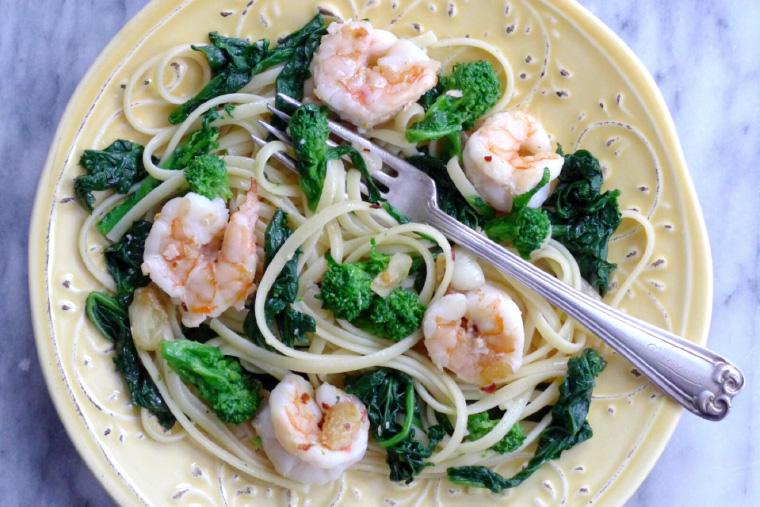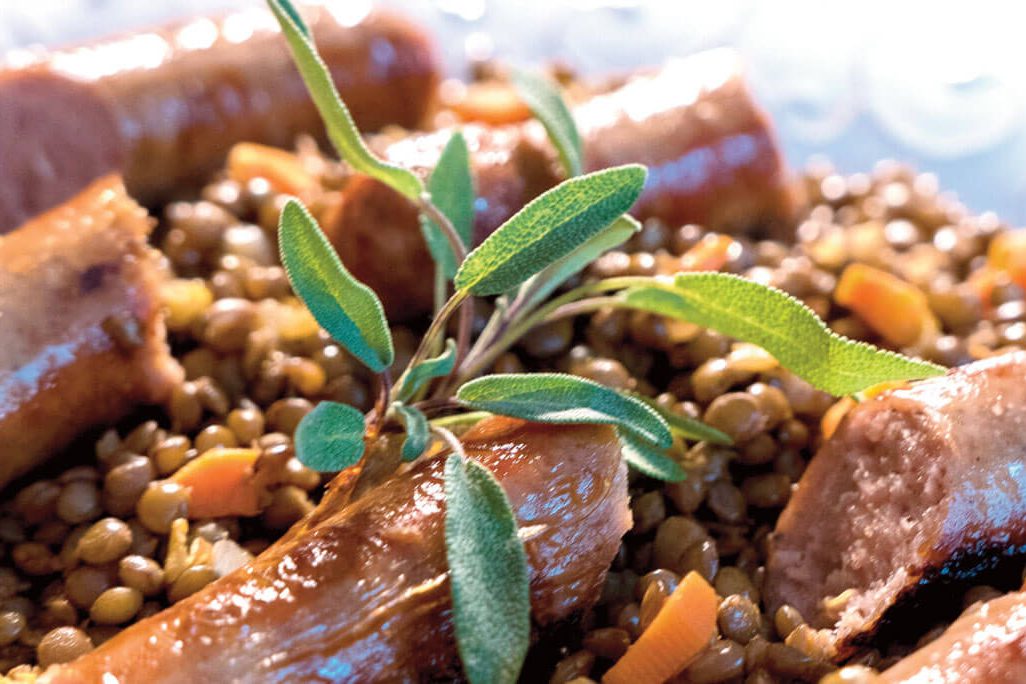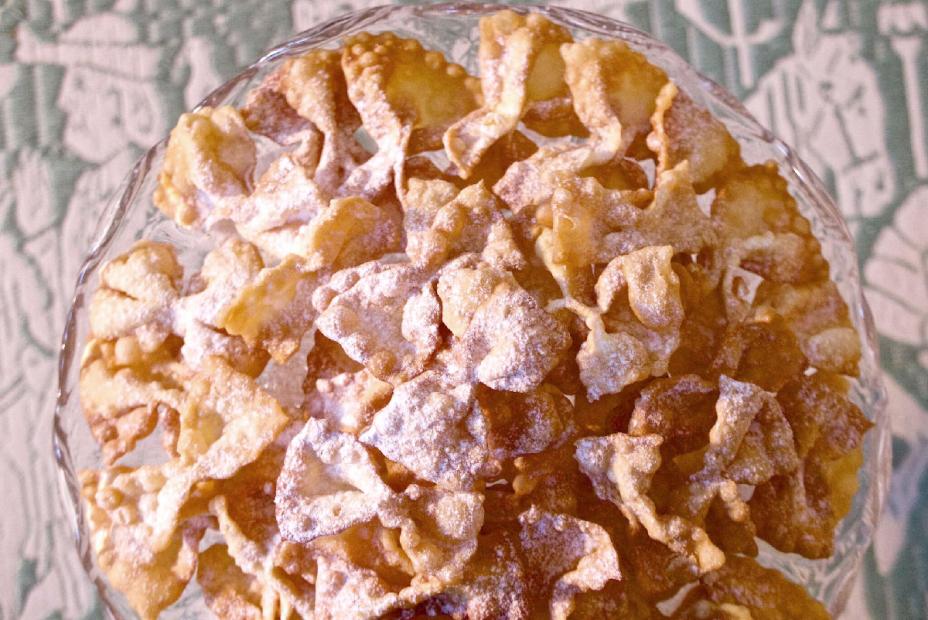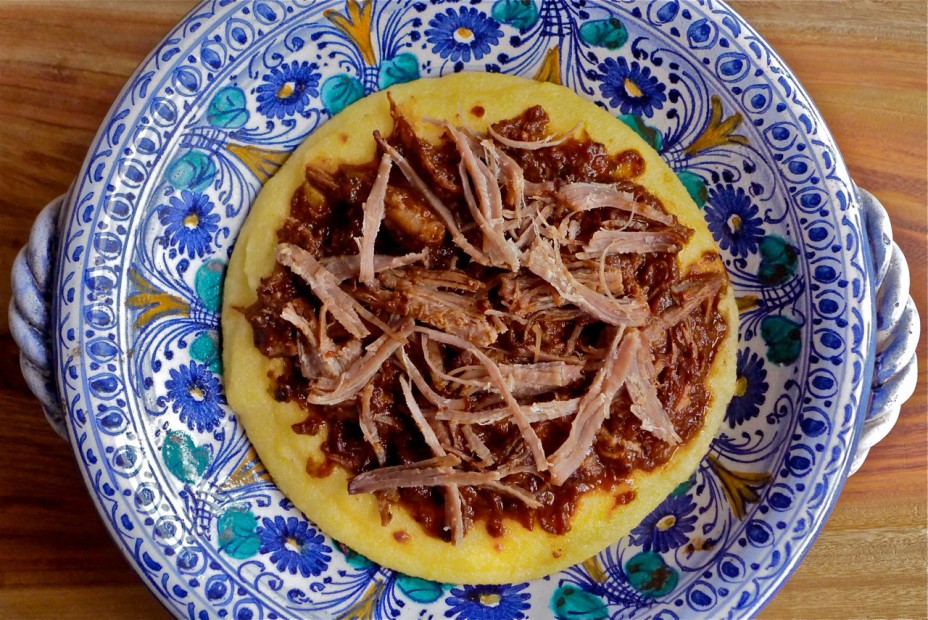The tiny island of Burano in the Venetian archipelago, with its colorfully painted houses and boats tied all along the canals “like so many domestic animals,” as Cassiodorus observed in A.D. 537, might be one of the most enchanting places in the world. When Professor Franco Fido, the then chairman of the Italian Studies department at Harvard and a native Venetian, heard that I would be traveling there, he urged me to go early and take the whole day to explore its hidden nooks and crannies. I did just that, watching the fishermen unloading their catch, wandering narrow stone side streets, and chatting with some of the locals about the fishing and island politics. Some of the reflections and recipes I gathered were published in a book about the food of Venice and the Veneto that I subsequently wrote.
Notwithstanding the professor’s good advice for how to sidestep the tourist track, on his “must” list was a meal at a renowned fish restaurant on the dock that has fed the rich and famous since the 19th century, from Pirandello to Charlie Chaplin to Ernest Hemingway to Robert De Niro, along with anyone else willing to pay the steep prices. I had put my name on a waiting list for lunch there with some trepidation. My natural instinct is to favor more modest places frequented by locals, but in Venice, where visitors far outnumber the inhabitants, no less on this miniscule island, such establishments are rare. Such were my thoughts as I made my way to the famed restaurant with little hope of even being seated.
Scanning the streets along the way for other possibilities, I noticed a smiling, aproned woman in the doorway of a casual restaurant on the main thoroughfare, beckoning me to come in. At that moment, her warm welcome and the kitchen sending forth good smells of fresh fish were irresistible. Abandoning my original plan, I went in and took a seat. As is the custom in small family establishments like this one throughout Italy, she came to the table and recited a few dishes the house was preparing for lunch.

“We bought shrimp from the fishermen this morning,” she offered, “and the broccoletti di rapa (botanical term, Brassica rapa; “broccoli rabe,” or “rapini” in American lingo) was picked today. I can cook them for you with tagliolini,” she added.
This particular combination had never occurred to me before, but it struck me as a natural — sweet, briny lagoon shrimps alongside the pleasantly bitter greens, the two brought together by gentle strands of pasta. I didn’t hesitate to place my order. The recipe, which my hostess happily shared with me, was probably as close to home cooking as one could hope to find anywhere in a Venice restaurant, where tourist menus are ubiquitous. More than anything, it was a variation on the theme of spaghetti aglio e olio made with fresh egg pasta, shrimp substituting for clams, and pre-cooked greens added.
While broccoletti di rapa— “rapi,” as some Italians call them, are almost unknown in other northern regions of Italy, the Veneto has a taste for “bitter”— famously, for radicchio rosso tardivo, the scarlet glory of Treviso that grows there and only there— and it cultivates the pungent Brassica rapa. Seafood is not an ingredient usually associated with these pungent greens the southern Italians love but the Venetians, surrounded by water as they are, combine every vegetable that is cultivated on the lagoon islands with seafood.
Recently, I got to thinking about the dish again and made it using linguine and fresh, small, well-sourced American shrimp—delightful, and a very pleasant reminder of my simple yet striking lunch on my first excursion to Burano.
Linguine with “Rapi” and Shrimp
• 1 bunch “rapi”
• 3 tablespoons kosher salt
• 7 tablespoons extra-virgin olive oil
• 6 large garlic cloves, smashed
• ¼ teaspoon hot red pepper flakes
• ½ pound medium or large shrimp, shelled, deveined, and patted dry with paper towels
• ¼ cup dry white wine
• ¼ teaspoons fine sea salt
• 6 ounces good quality imported Italian linguine
• equipment: large mesh strainer or kitchen “spider”
1. Trim off any discolored tips from the bottom of the rapi stems. Using a paring knife, peel the outer skin from the thick stems as you would do with asparagus. Sever the stems from the tops and cut them into 2-inch lengths while leaving the buds whole. Wash the greens in abundant cold water.
2. In an ample stock pot, bring 6 quarts water a rolling boil. Add the rapi and cook for 2-1/2 minutes. Place a large mixing bowl next to the burner. Use the strainer to lift the greens out all at once and set the strainer over the bowl to drain. Set aside. Reserve the cooking water.
3. In the meantime, in a skillet large enough to accommodate the cooked greens and the pasta later, warm 3 tablespoons of the olive oil over medium-low heat. Stir in half the garlic and red pepper flakes and sauté gently until the garlic is colored but not brown, about 3 minutes. Add the drained greens to the skillet and push them around in the oil to coat evenly. Transfer them to a warm bowl and use a paper towel to wipe the skillet clean.
4. Warm the remaining oil with the remaining garlic over medium-low heat until it is golden but not brown. Add the shrimp to the pan and sauté until pink on both sides, about 6 minutes. Take care not to overcook them. Add the ¼ teaspoon fine sea salt and the wine, tossing the shrimps in the liquid to enable them to absorb it evenly. Turn the heat to low and simmer for another minute to allow the alcohol to evaporate. Return the greens to the skillet and toss them together with the shrimp. Fish the garlic out or leave them in, as you prefer. Set the skillet aside.
5. Bring the reserved rapi cooking water back to a rapid boil. Stir in the linguine and cook precisely according to the package instructions for “al dente.” Drain and toss the pasta together with the greens and the shrimp. Taste for salt and serve while piping hot.
Preparation time: 15 minutes
Cooking time: about 30 minutes
Total time: about 45 minutes
Difficulty Level: Easy
Julia della Croce is a food writer and James Beard award-winning cookbook author and recipe developer based in New York. She is presently incubating a book about her family’s ancestral region, Sardegna. Visit her website, www.juliadellacroce.com and blog, http://juliadellacroce.com/forktales1/, connect on Facebook: Julia della Croce – chef & foodwriter, Twitter: @juliadellacroce and Instagram: juliadellacroce.































